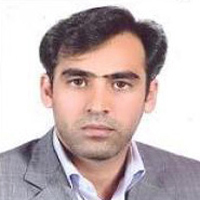Sustainable Form of the City and Social Justice(Case Study: Miandoaab)
Author(s):
Abstract:
Extended Abstract Introduction Inequality in the distribution of services and facilities in different neighborhoods of a city follows the overall pattern of urban growth "compact city" and "large city", in a way that the sustainable urban form includes such urban developments that lead to the formation of justice community in the cities. The urban growth pattern consists of two Compact cities and Spared out that most cities have followed from one of these patterns, these two forms are claim in Sustainable forms of cites and these patterns have different influence on urban services and facilities are distributed. The purpose of this essay is to study the pattern of urban development on the way of distribution of urban utility and services in Miandoaab city. Methodology According to the research objectives and components survey, this article is applied research. The Method Research Is Descriptive-Analytical. A survey, based on administrative divisions mentioned in various Places - Housing and Physical Planning is in 2006 year. Also by using of 13 utility indexes, the method of distribution of utility was studied at 30 regions. Using Methods of standardized score (Z-Score), different types of correlation and regression in the SPSS computer software. Results and Discussion Like other Iranian cities, Miandoab, after land reform has experienced a rapid urbanization growth. But the rapid urbanization growth caused by land reforms did not lead to disproportionate amounts of physical development and physical growth of the city. The most important criterion for the analysis of spatial equity and growth in the City of Miandoaab is the distribution of urban services that with using the standardized scores, distribution of services in different localities has been studied. According to 1956 statistics, Miandoab has an area of 84 hectares and its population of 14,767 people, and thus the mass urban population is estimated at about 176 people per hectare. Physical expansion of the city during the years of 1956-2006 was almost faster than population growth, and density of the city decreases from 176 people per hectare to 62.5 ha, that reflects the comparative horizontal continuing expansion with a nearly relatively high speed. Density reduction and further area growth because of city development, has been toward the Zarineh Rood and near the river many lands has been allocated for green areas, trees and parks. However, Miandoab city comparing with the other cities had a high population density. Physical development of the city is as a compact city development. Conclusion According to city density as problem of urban development. Miandoaab city has the compact urban development, because by urban net-density with 235 people per hectare and population -density 62.5 person per hectare was estimated. Also by using of 13 utility indexes, the method of distribution of utility was studied at 30 regions. Those 2 ones were have the balanced distribution of utility completely, 5 once were rather balanced, 10 ones were half- balanced and 13 once were un-balanced. Linking statistic relationship between population net-density and z-score distribution utility shows that population density and distribution service have the impressive comparative relation, while regions with rather over population density have the distribution services completely un-balanced. According to, damageability of urban development of Miandoaab city was appear by criterion of distribution of services (social justice) For this purpose optimal population density pattern by means of ventured statistic examination that population density with 250 person per hectare in any region is called sustainable urban development pattern.
Keywords:
Language:
Persian
Published:
Human Geography Research Quarterly, Volume:44 Issue: 80, 2012
Page:
177
https://magiran.com/p1000426
مقالات دیگری از این نویسنده (گان)
-
Spatial analysis of the trend of regional inequalities in Iran
Mirnajaf Mousavi *, Nima Bayramzadeh
Journal of of Geographical Data (SEPEHR), -
Investigating the Feasibility of Good Urban Governance with Emphasis on Spatial Justice (Case Study: 5 Regions-Urmia)
Mirnajaf Mousavi *, Reza Ghaderi, Nima Bayramzadeh, Roya Kamel Nia
Research and Urban Planning,


